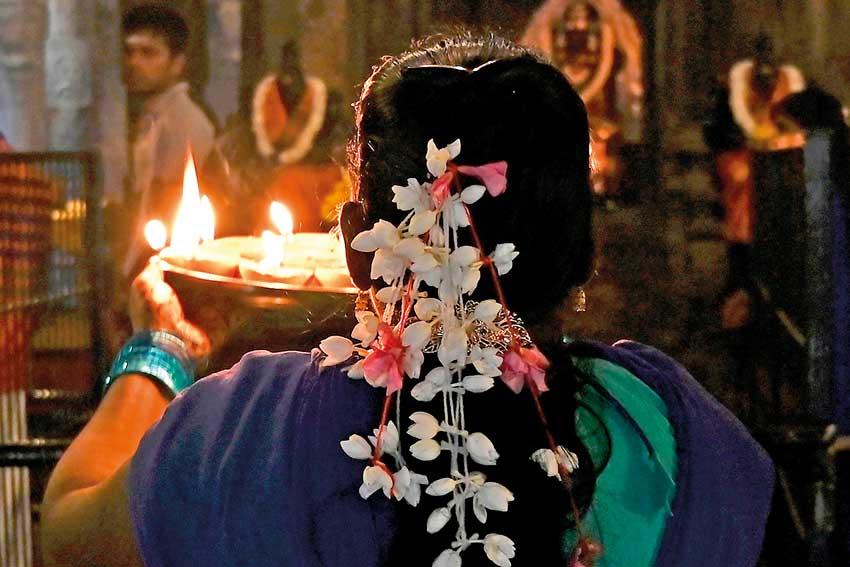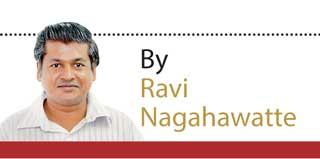Reply To:
Name - Reply Comment

The Tamil community in Sri Lanka remain marginalised and the voices in support of them are coming from overseas
 The Tamil community celebrated Deepavali starting November 4 with the festivities lasting for five days. The Tamils in Sri Lanka might have forgotten to fight for their cause, but they remember to celebrate their traditional festivals.
The Tamil community celebrated Deepavali starting November 4 with the festivities lasting for five days. The Tamils in Sri Lanka might have forgotten to fight for their cause, but they remember to celebrate their traditional festivals.
The Government wants to portray to the outside world that lives of the minority Tamils in Sri Lanka are slowly returning to normalcy after a civil war and that people belonging to different faiths and communities can look forward to a life of dignity in the island.
It is in this backdrop that President Gotabaya Rajapaksa recently invited the Tamil diaspora for talks to find a solution to the national question. However, despite President Rajapaksa making that positive statement he encountered some opposition in Geneva by members of the Tamil community who protested demanding a solution to the problems back at home.
|
Implementing the 13th Amendment to the Constitution fully and the early conducting of Provincial Council Elections are top priorities for a solution from a Tamil citizen’s point of view Over the years, after the British divided us so deeply, the Sinhalese and the Tamils have remained on two sides and thrown brickbats at each other |
The truth is that the Tamils still don’t see where they stand as a community in Sri Lanka; largely because there are more privileged communities getting the best in all sorts of deals, education and the choice made when deciding on where to live.
For example a member of the majority Sinhalese community will have that little inclination to hold back when a member of one of the minorities living here responds to an advertisement when notification is made that a house is available for rent. It’s the same when it comes to doing business and finding business partners and allocating a percentage for Tamils when it comes to enrolling students for the year one grade at national and semi-government schools. The word that best describes their future here, in the island, is ‘limited’.
Implementing the 13th Amendment to the Constitution fully and the early conducting of Provincial Council Elections are top priorities for a solution from a Tamil citizen’s point of view. The Tamil community also wants the Tamil language to have a similar place as the Sinhala language and the path for these thoughts is mapped in the wordings in Chapter IV of the 1978 Sri Lankan Constitution.
But critics opine that the wordings in the Constitution are faulty and thus elevates the Sinhala language when it comes to the application of language and dealing with vital issues; especially related to matters like gaining state sector employment.
Over the years, after the British divided us so deeply, the Sinhalese and the Tamils have remained on two sides and thrown brickbats at each other. No one from the outside world would imagine that the leaders of both these communities made a joint effort when fighting for Sri Lanka’s independence from the British. It is also hard to believe that despite such differences within the two communities the island found a Tamil youth by the name of Muttiah Muralitheran to represent the national cricket team in which the majority of players comprised Sinhalese nationals. Strangely Muralitheran speaks fluent Sinhalese and even spoke positively when the government security forces put an end to a Tamil Tiger rebellion back in the year 2009. But all that is seen, discussed and analysed from a Tamil perspective or from the eyes of the Tamil community.
Recently Daily Mirror columnist PK Balachandran writing about ‘the take over of Kandy’ penned his piece reviewing this part of Sri Lanka’s history through the eyes of the British. At one point he stresses that “In the eyes of the British Sri Wickrama Rajasinha was not unprepossessing in appearance, except when he was excited, when his eyes gleamed with the fire of a demon, and his face assumed an air or malignant cruelty”. In the records of the Sri Lankan history King Sri Wickrama Rajasinghe is slated as one of the most fair leaders we had despite the monarch being a Tamil and a Hindu. But the British saw none of that.
One of the biggest misfortunes of Sri Lanka is that we fail to see the other’s problems from a human angle. For some Sinhalese politicians the members of the Tamil community who migrated between 1983 and 2009 did so in search of greener pastures. But from a Tamil lawmaker’s perspective these Tamils fled the country due to the war and because it was unsafe to reside in the north and the east during the raging civil war and heavy shelling.
Now the Government of Sri Lanka is forced to engage the Tamil diaspora in conversation because there is pressure from the outside world-especially the United Nations-to speed up reconciliation, solve the national question and retain the GSP plus facility. There is another reason to engage the Tamil diaspora in conversation, according to Vishaka Suriyabandara, Head of Department of Political Science and Senior Lecturer at the Sri Jayawardenapura University. Suriyabandara quoted in the Sinhala weekend newspaper ‘Anidda’ on its October 3 edition states that the Tamil diaspora is important to Sri Lanka at this juncture because its members are affluent, highly educated and very well organised. There is also the Global Tamil Forum (GTF)-which represents sections of the vast Tamil diaspora- which is also a key player that can influence the minds of the Sri Lankan Tamils here and has openly stated in media outlets that it is sceptical about President Rajapaksa’s call to engage the diaspora in conversation to find a political solution to the national question.
Critics point out that President Rajapaksa must make the call to engage the Tamil diaspora for talks not when he is abroad, but when he is in Sri Lanka.
This Government, like past regimes, must realise that problem solving is an art and shouldn’t be mixed up with playing to the gallery. Up to date all governments postponed finding a solution to the national question, because they couldn’t fall into the bad books of the Sinhala hardliners and the saffron robed monks by doing so. By now the members of the Tamil community who are lawmakers are jaded after tiring efforts to engage the Sinhalese majority governments in discussions. Some of them have entered mainstream politics and have had a change of heart about being the voice of the Tamil people. The former Tiger rebel, the man who is likened to a cat with many lives, who at present holds a ministerial post, is happily serving the Sinhalese majority government and has never been heard criticising the state. It’s only a few lawmakers from the minority community who are genuinely fighting the cause of the Tamils. There are scores of Tamils who are speaking Sinhala fluently and even serving Sinhala paymasters. Inter-marriage between these two communities have taken place. Last weekend at the popular talent show titled ‘Voice Sri Lanka’ a promising Tamil contestant, who sings in many languages, was asked to sing a certain Sinhala song throwing a Tamil accent and flavour. His coaches were a tad disappointed when the singer ‘roared’ in perfect Sinhala and had the television audience at the edge of their seats. The new generation of Tamils are forgetting to preserve their identity and also that there was a ‘national question’. When the youth who drew paintings on walls to usher in a new era of hope after this regime took over have been forgotten quite conveniently what can one expect for the Tamil youth who are stuck here?
The minority Tamil issue must be addressed for posterity because right now, it seems, only India and the diaspora are raising a voice regarding this issue. The most healthy solution for this issue is a home solution sans interference from the outside world.